One Step Closer to The Moon: China Successfully Tested Long March 10 Rocket’s Propulsion
17th Jun 2024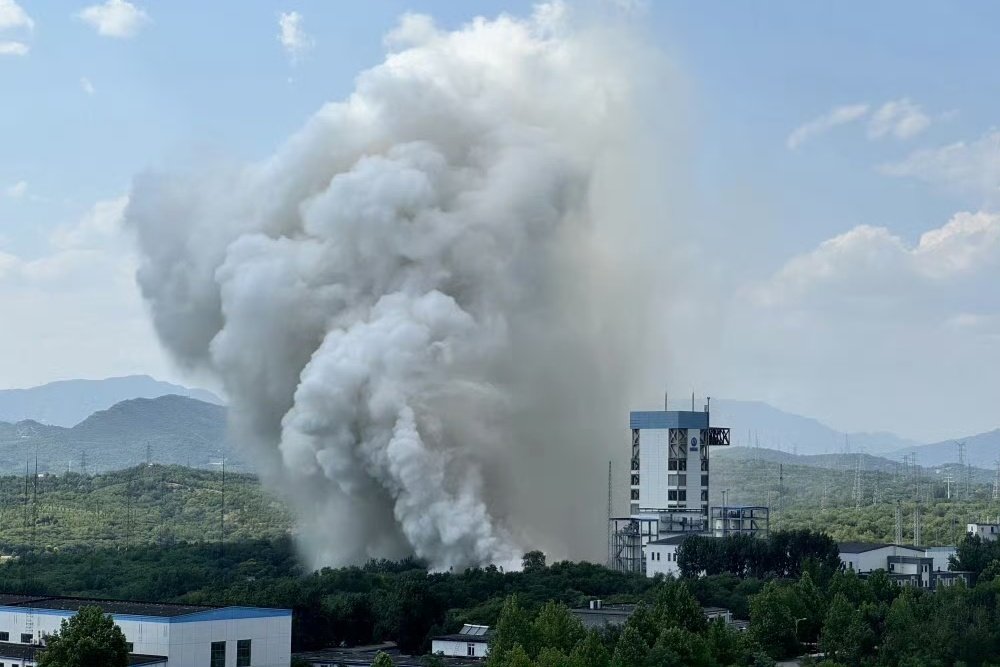
On 14 June, China completed the first propulsion system test of its Long March 10 space launch vehicle. The rocket will be used to land Chinese astronauts on the Moon by 2030.
Development
The Long March 10 is a super heavy launch vehicle designed to launch China’s Mengzhou crewed lunar spacecraft and its future Lanyue crewed lunar lander. The development of this vehicle was started by the China Academy of Launch Vehicle Technology (CALT) far back in 2017. Its official debut was at the 12th China International Aviation and Aerospace Exhibition in November 2018. However, the term “Long March 10” was used later, in 2023, at the “30 Years of China’s Manned Spaceflight” exhibition.
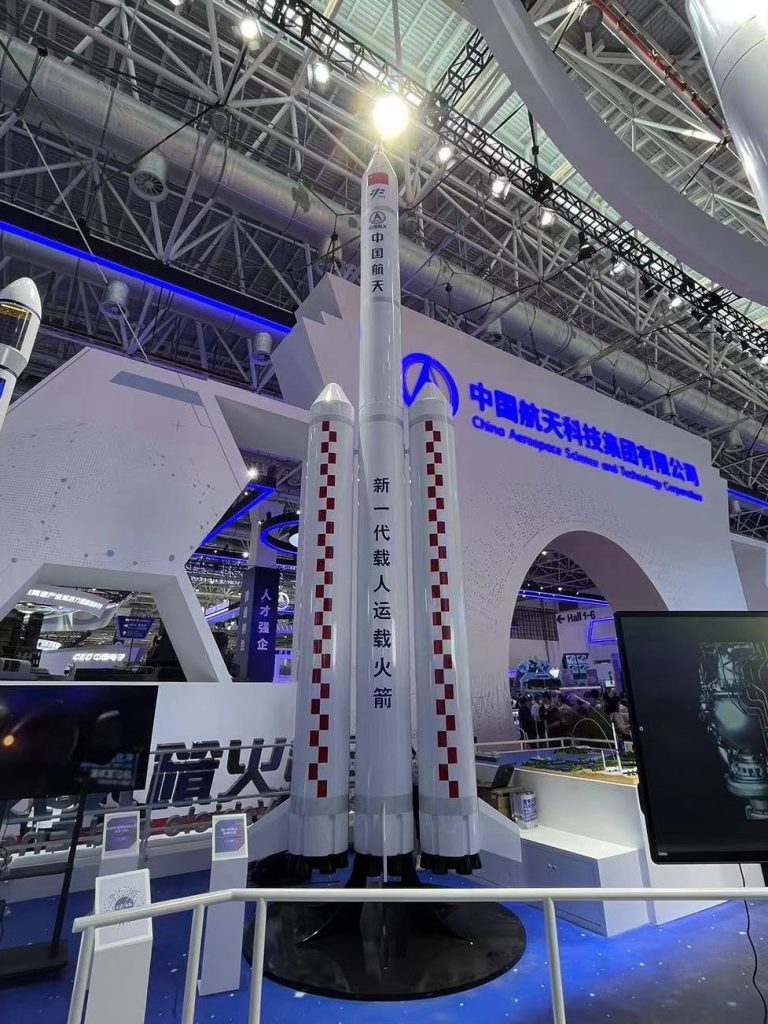
Main Features of The Long March 10
The Long March 10 will consist of three stages. The vehicle’s total length is approximately 90 meters, the mass is around 2,189 tonnes. The crew module has a capacity of between four and seven people. The vehicle will be capable of lifting 70 tonnes into low Earth orbit (LEO) and 27 tonnes into trans-lunar injection trajectories. Thus, it is China’s most powerful rocket so far.
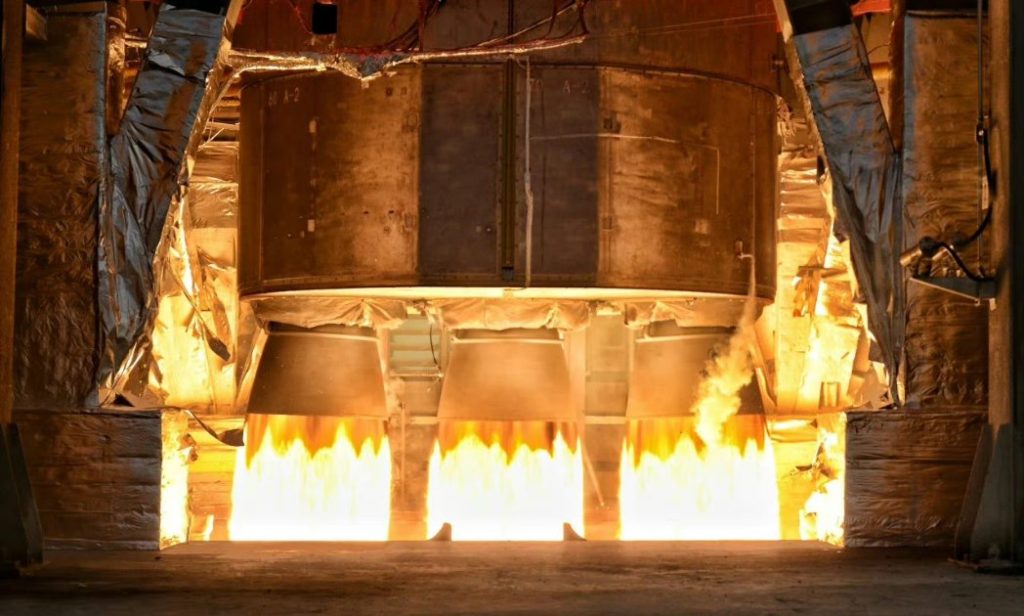
The first-stage core and the two boosters will be equipped with seven YF-100K kerosene-liquid oxygen engines. However, the test version had only three engines installed, due to the test stand’s limited capacity.
To the Moon and back
Two launches of Long March 10 will be used to deliver astronauts to the moon and back. One will launch the Mengzhou crew spacecraft and another – the Lanyue lunar lander. They will meet in lunar orbit. Two astronauts descend to the surface of the landing module. They will spend six hours on the lunar surface before rejoining other astronauts in lunar orbit and returning to Earth.
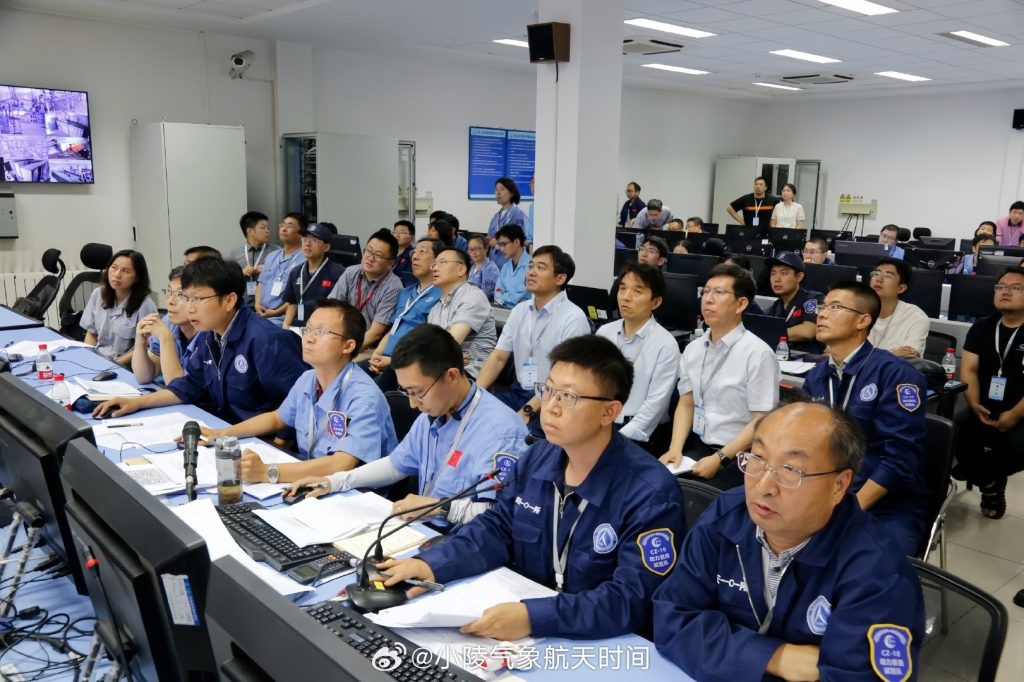
The propulsion system test is the most complicated ground test undertaken during the development of carrier rockets.
“During the test, the propulsion system’s engine started normally, operated stably and shut down on schedule, and all parameters tested were normal”, CALT said. According to a development plan, the second first-stage propulsion system test for the Long March 10 rocket will be carried out soon to verify other operating conditions.
In order to achieve the planned timetable, the Long March 10 rocket must successfully complete its inaugural flight, which is planned for 2027.
What’s next?
The development and testing of the Long March 10 vehicle for crewed lunar missions is a crucial step in China’s plans to have astronauts land on the moon by 2030.
Moreover, it is a part of China’s wider plans to establish an International Lunar Research Station (ILRS) – a comprehensive scientific experiment base on the lunar surface or in lunar orbit.
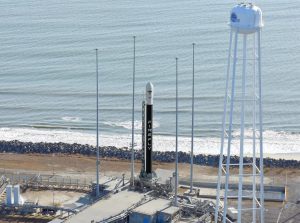
![[Updated] Chang’e-6 Returned To Earth With Samples From The Far Side Of The Moon [Updated] Chang’e-6 Returned To Earth With Samples From The Far Side Of The Moon](https://orbitaltoday.com/wp-content/uploads/2024/06/Change-6-spacecraft-300x169.jpeg)




Thank you for your comment! It will be visible on the site after moderation.